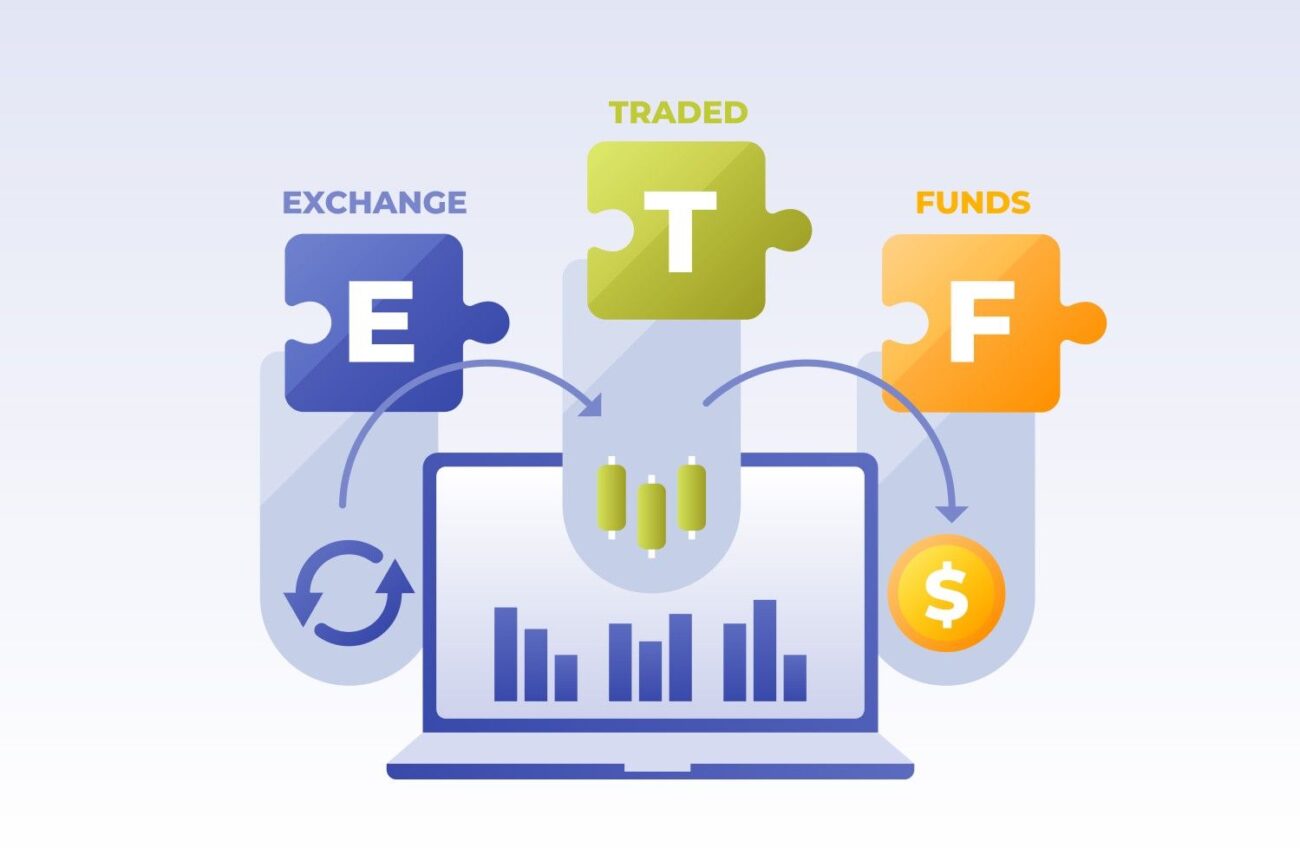Because of contemporary financial tools and digital platforms, investing in India has never been simpler. Out of every option, investing in exchange-traded funds (ETFs) has become a popular option for both beginner and experienced investors. Investment products known as exchange-traded funds, or ETFs, track a collection of assets such as stocks, bonds, or commodities. Compared to individual stocks or mutual funds, they provide variety, reduced expenses, and simpler management.
We’ll describe the advantages of ETF investment, provide helpful guidance for a hassle-free experience, and show you how to begin investing in it in India in this guide.
What Are ETFs and Why Consider Them?
The benefits of stocks and mutual funds are brought together in exchange-traded funds (ETFs). They offer the variety of a mutual fund but are traded on stock exchanges just like individual shares.
ETF investment benefits include,
- Diversification – It lowers risk by spreading your investment among several assets.
- Availability – ETFs can be purchased or traded at any moment during business hours.
- Reduced Costs – Usually less costly than traditional mutual funds.
- Access to information – You can make educated decisions because holdings are made public every day.
Because your risk is spread across several assets, investing in exchange-traded funds (ETFs) is frequently much simpler for beginners than choosing individual stocks.
Step 1 – Define Your Investment Goals
Before investing, make sure your goals are clear,
- Is short-term growth, retirement savings, or long-term wealth what you want to achieve?
- How much risk are you willing to take on? Bond or gold ETFs are safer than riskier equity ETFs.
You can select the best ETFs by finding answers to these questions. Index-based or bond ETFs are usually the best choices for Indian investors looking for low-risk ETF investment options.
Step 2 – Choose the Right ETFs
Choosing the right ETFs is essential. Take into account the following factors,
- Investment Class – ETFs based on stocks, debt, or commodities.
- Tracking Index – Verify that the ETF closely matches its standards.
- Expense Ratio – More returns stay with you when fees are lower.
- Availability – Buying and selling are made simpler by high trading volumes.
Choosing broad-market index ETFs, such as Sensex or Nifty 50 trackers, can be the first step for beginners looking to begin investing in ETFs in India. With less risk, these ETFs offer market visibility.
Step 3 – Open a Demat and Trading Account
You must have a Demat and trading account with a licensed financial institution to trade ETFs. Typically, the following documents are needed,
- The PAN card
- The Aadhaar card
- Details of a bank account
Certain websites simplify this procedure by offering simple instructions and investment advice.
Step 4 – Use a Digital Platform to Invest
These days, several platforms make it easy and digital to invest in ETFs. These platforms make it easy to buy, sell, and monitor online without physically going to a dealer.
Step 5 – Diversify Your Portfolio
Diversification lowers risk. Mix and match different ETF types,
- Growth-driven equity ETFs
- ETFs for bonds that provide safety
- ETFs that invest in goods such as gold, to protect against rising prices
- A diversified portfolio protects you from fluctuations in the market and promises steady growth.
Step 6 – Monitor Your Investments
ETFs require little maintenance, but it is essential to keep an eye on them. Keep monitoring out for,
- Performance of ETFs compared to benchmarks
- Fees and expense ratios
- Trends in the market that impact the assets underneath
You can stay informed without spending hours going through your investments by using platforms like Olyv, which support real-time tracking.
Step 7 – Know the Tax Implications
Know the tax laws before you invest,
- Equity ETFs – long-term profits (>12 months) are taxed at 10% above the ₹1 lakh allowance, while short-term gains (<12 months) are taxed at 15%.
- Debt ETFs – Long-term gains are taxed at 20% with indexation, while short-term gains are taxed according to income level.
This means that you maintain standards while improving returns.
Tips for Beginners
- Begin slowly – As you learn more, gradually raise the first amount you invested.
- Invest automatically – Systematic Investment Plans (SIPs) in exchange-traded funds (ETFs) contribute to the slow buildup of wealth.
- Remain focused – long-term objectives and avoid panic selling as fluctuations in the market are common.
- Learn – Read ETF guides, check updates, and watch financial news.
Conclusion
ETF investing is simpler nowadays in India and offers a convenient means of building up wealth while managing risk. You can easily achieve long-term financial growth by setting specific objectives, choosing the appropriate ETFs, diversifying your portfolio, and regularly reviewing your investments. To get the most out of your ETF investments, start small, be consistent, and make wise choices. ETF investment can become a trustworthy part of your investment strategy and effectively help you in achieving your financial objectives if you are patient and focused.





This is a really clear overview of how ETFs combine the best of mutual funds and stocks. I like that you highlighted the importance of defining goals before investing—it’s something many new investors skip. It might also help beginners to understand how index-based ETFs differ from sector-specific ones since that choice can really shape their risk and returns.